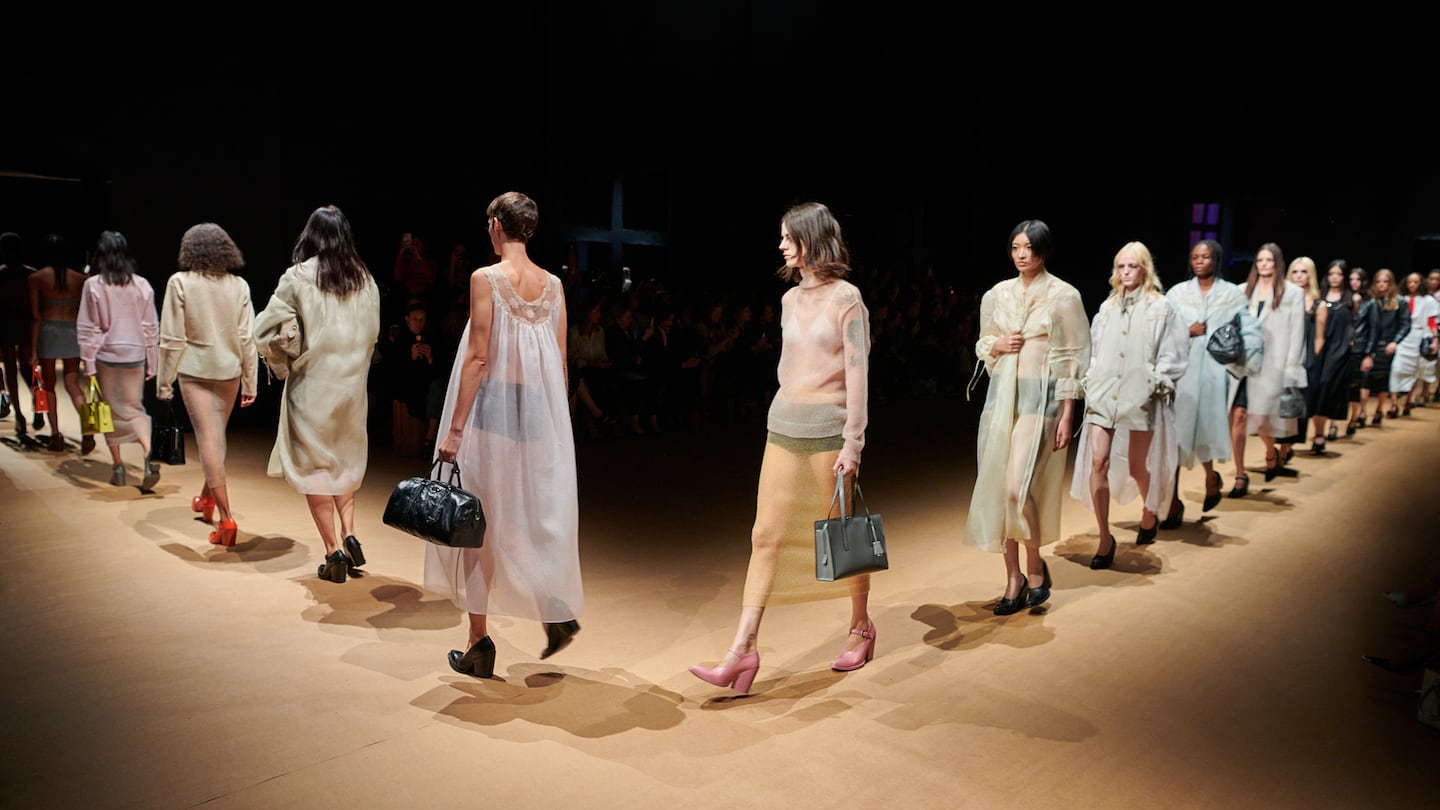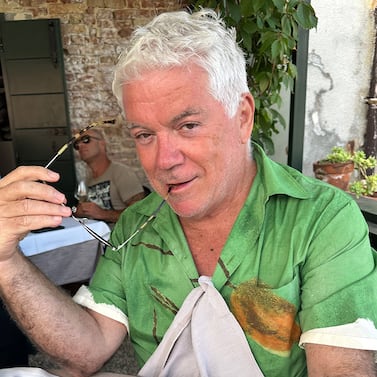
The Business of Fashion
Agenda-setting intelligence, analysis and advice for the global fashion community.

Agenda-setting intelligence, analysis and advice for the global fashion community.

MILAN — I’m knee-deep in Stephen King’s “Fairy Tale.” It seems like a perfect paradigm for the chaotic here and now. Behind the flimsy make-believe of reality, there is another world, an Oz where human folksiness and eldritch horror co-exist to a degree so intimately uncomfortable that apocalypse is constantly incipient.
I took one look at the Prada set on Thursday – doors and windows brutally torn out of a black backdrop, offering glimpses of an abstract, hectically coloured beyond — and I thought, oops!, Fairy Tale.
That’s because I’m a very suggestible human being. But Miuccia Prada and Raf Simons had engaged filmmaker Nicholas Winding Refn (you’ll know him from “Valhalla Rising,” “Drive,” Netflix’s “Too Old to Die Young,” and his scathing fashion satire “The Neon Demon”) to create an atmosphere for their show. Which he did. He named it Touch of Crude: touch so gentle, crude so formless, unfinished. And that’s how the collection unraveled.
There were four rooms: bedroom, bathroom, kitchen, living room. Havens of domesticity. They provided a backdrop for clothes that very deliberately, perversely twisted the familiar: a back-to-front cardigan; a substantial sweater and skirt, rendered delicately insubstantial in the gauziest wool; a couture silhouette — sack jacket and pencil skirt — cut from worn biker leather; a sheer nightdress turned into daywear.
ADVERTISEMENT
There was a careless effect in the clothing, with unfinished hems and incomplete colour blocking. Again, the perversity. Those pieces had a louche glamour that was intrinsically Prada. When Julia Nobis rotated on the catwalk, her black taffeta dress was open to the base of her spine. Or not open so much as undone. Especially because there was also a rosette and a long black train. She was a widow in the very merriest of mourning.
0 of 55
Oh, about those rosettes, as camellia-like as one of Chanel’s tack-ons. Or the lily of the valley motif on a sheath dress (Dior’s favourite flower, remember). Or the slip dress that echoed Simons’ guiding light Martin Margiela. Or the way some models clutched their coats in the intimate gesture that was such a sensational signature for Simons at Jil Sander. There were moments when it felt like this was a fashion show about fashion, taking place in a parallel world where no one knew about those references, where everything old was made new again. An aide-memoire. A memento mori.
Speaking of parallel worlds, the show was accompanied by a video where Prada, Simons and Refn shared their thoughts in a room as luridly curtained as the Red Room in “Twin Peaks.” Prada talked about the way an object —i.e. a piece of clothing — could embody a vision. They were wrinkled, they were unmade, they had the casual illogic of a dream. A dark fairy tale.
Inside fashion’s most idiosyncratic, influential duo and the challenge of balancing creative complexity with a big brand’s need for clarity.
After a lengthy turnaround, CEO Patrizio Bertelli outlines his growth plans for the Milanese fashion giant.

Tim Blanks is Editor-at-Large at The Business of Fashion. He is based in London and covers designers, fashion weeks and fashion’s creative class.
From where aspirational customers are spending to Kering’s challenges and Richemont’s fashion revival, BoF’s editor-in-chief shares key takeaways from conversations with industry insiders in London, Milan and Paris.
BoF editor-at-large Tim Blanks and Imran Amed, BoF founder and editor-in-chief, look back at the key moments of fashion month, from Seán McGirr’s debut at Alexander McQueen to Chemena Kamali’s first collection for Chloé.
Anthony Vaccarello staged a surprise show to launch a collection of gorgeously languid men’s tailoring, writes Tim Blanks.
BoF’s editors pick the best shows of the Autumn/Winter 2024 season.